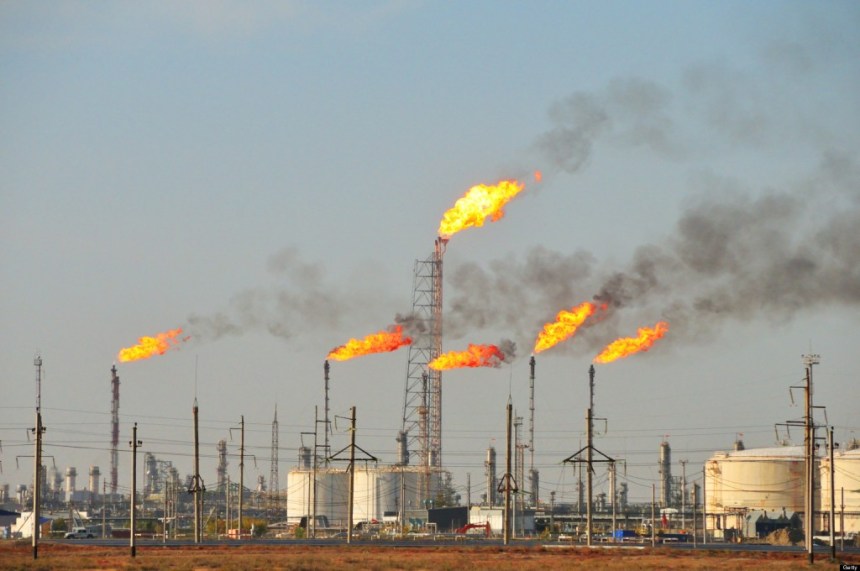The aftermath of breakdown of dams could have significant consequences for Africa, irrespective of where it occurs. Observers have expressed concerns that diverting the flow of the Congo River to create a reservoir would flood the Bundi Valley, affecting local agricultural lands and natural environments, and may cause huge methane emissions that would contribute to global warming. The effect of a reduced flow in the Congo River may cause loss of biodiversity and a shift in the dominant species. The flooded area may also create an environment that is conducive for the breeding of waterborne vectors such as the mosquito. Transmission lines always result in huge corridors of forests being cleared. The DRC has the worlds’ second-largest rainforest and loss of the forest to create paths for electricity transmission lines would have significant environmental and social impacts, not to mention the security and maintenance risks posed by such a long transmission system.
As at mid-2016, the World Bank Group suspended disbursements of funding to the Inga-3 Basse Chute (BC) and mid-size hydropower development Technical Assistance (TA) project in the DRC, following the Government of DRC’s decision to take the project in a different strategic direction to that agreed between the World Bank and the Government in 2014. The World Bank’s Board had, in 2014, approved a $73.1million grant from its International Development Association (IDA) for the project, consisting of Inga-3 BC development support of $47.5 million and mid-size hydropower development support ($25.6 million). At the time of suspension, approximately six per cent of total project financing had been disbursed.
On Environmental impact assessment at Inga, concerned interest have alleged that the project proceeded without a formal review of its environmental impact — an act that would violate national law, World Bank policies and Chinese guidelines for overseas contractors. If, as a consequence, the project will displace some of the local population, a resettlement action guide must be attached to the assessment. An absence of environmental and social assessments could affect the financing of the project, it was gathered.
With about 83 per cent of Ethiopia’s population living in rural areas and many deriving their livelihoods from agricultural and environmental resources, primarily rain-fed agriculture and cattle grazing, any adverse consequence of dam construction could threaten lives and wipe off their livelihoods. According to findings, over 90 per cent of Ethiopia’s cropland consists of small scale rain-fed household production systems and a growing population has placed extreme pressure on the land, resulting in accelerated erosion, soil degradation, and rural impoverishment, which could be worsened by dam project if it fails. That the Ethiopian highlands within the GERD watershed are considered to be one of the severest cases of watershed degradation in the world is quite instructive as much more is at stake than the issue of reservoir sedimentation, because the degraded soil conditions result in rural poverty and food insecurity.
The Kariba’s collapse, it was feared, would constitute an epochal event in the history of energy development—the dam industry’s Chernobyl. The ensuing torrent would be four times bigger than the Zambezi’s biggest recorded flood, in 1958, and would release enough water to knock over another major dam three hundred miles downstream, in Mozambique. At least three million people live in the flood’s path; most would die or lose their crops or possessions. About forty per cent of the electricity-generating capacity of twelve southern African nations would be eliminated. More energy sources, such as wind, solar, and miniature hydropower units are becoming competitive, and popular as they cause far less social and environmental damage. In the age of rapid and profound environmental events, dams are particularly ill-suited to climate change, as they simultaneously requires that they be larger (to accommodate the anticipated floods) and smaller (to be cost-effective during the anticipated droughts). Globally, many dams are being built in seismically active regions, including the Himalayas, Southwest China, Iran, Turkey, and Chile. International Rivers calls for a moratorium on the construction of high dams in earthquake-prone areas. Given that every dam site has unique geological characteristics, it is not possible to accurately predict when and where earthquakes will occur. However, the International Commission on Large Dams recommends that ReservoirInduced Seismicity (RIS) should be considered for reservoirs deeper than 100 metres. A leading scholar, Harsh K. Gupta, summarised his findings on RIS worldwide in 2002 thus: the “depth of the reservoir is the most important factor, but the volume of water also plays a significant role in triggering earthquakes.” Another authority, Dr. V. P Jauhari, posited about RIS, pointing out that “the most widely accepted explanation of how dams cause earthquakes is related to the extra water pressure created in the micro-cracks and fissures in the ground under and near a reservoir. When the pressure of the water in the rocks increases, it acts to lubricate faults which are already under tectonic strain, but are prevented from slipping by the friction of the rock surfaces.” Since we have to live with the risks and benefits of dams, we need to have clear understanding of the universal infrastructure. But what are the explanations for the increasing rates of dams’ breaking down? In China, the Mao Zedong-era dam collapse, covered up for decades, was adjudged the worst dam disaster in history, killing between 170,000 and 240,000 people. Cases of smaller dams collapsing have been recorded in China lately. A dam burst on May 12, 2016 in a village in east China’s Jiangxi province, exposing the whole village and acres of farmlands to flooding, further eroding the Chinese people’s confidence in the Three Gorges Dam’s capacity to stop disasters as new threats are emerging. In India, on September 2017, within the period of the annual Monsoon rain, the wall of an Rs 389-crore dam collapsed during the trial run, ahead of its scheduled inauguration, and inundated nearby areas of a township in Bhagalpur. In 2018 alone, no fewer than three major dam catastrophes have been recent projections, cited by the Intergovernmental Panel on Climate Change (IPCC), indicate that the Zambezi River Basin will experience still drier and more prolonged droughts and even bigger floods in years to come. World Bank and other international lenders, sensing the need to head off a catastrophe, agreed in November of 2014 to provide a loan of nearly $300 million to repair the dam, stating that the project requires “immediate attention.”
The number of dams within Africa is growing and Kariba is just one of more than two thousand large dams in the continent. Zimbabwe, one of the world’s poorest nations, has at least 254 dams. In just two of 36 states in Nigeria, there are over 30 dams of various sizes and levels of sophistication. But maintaining a dam is expensive—and much less politically popular than building one. Even in affluent countries such as the United States—with dam infrastructure in sufficient disrepair to have earned a “D” rating from the American Society of Civil Engineers, in 2013—maintenance is often neglected. Dams are therefore not likely to fare better in impoverished, corruption-ridden countries such as Zimbabwe or Iraq where Mosul dam has been a nightmare in recent times. Dams can’t be drained, and dismantling them can be as costly as building them. This is the trap of Industrial Age technology: once mechanised systems supplant natural ones, they must be managed in perpetuity, or else they break down.
Just while the dilemma around dam projects are becoming more pronounced, other forms of renewable energy sources, such as wind, solar, and miniature hydropower units are becoming competitive, and popular as they cause far less social and environmental damage. In the age of rapid and profound environmental events, dams are particularly ill-suited to climate change, as they simultaneously requires that they be larger (to accommodate the anticipated floods) and smaller (to be cost-effective during the anticipated droughts). Globally, many dams are being built in seismically active regions, including the Himalayas, Southwest China, Iran, Turkey, and Chile. International Rivers calls for a moratorium on the construction of high dams in earthquake-prone areas. Given that every dam site has unique geological characteristics, it is not possible to accurately predict when and where earthquakes will occur. However, the International Commission on Large Dams recommends that ReservoirInduced Seismicity (RIS) should be considered for reservoirs deeper than 100 metres.
A leading scholar, Harsh K. Gupta, summarised his findings on RIS worldwide in 2002 thus: the “depth of the reservoir is the most important factor, but the volume of water also plays a significant role in triggering earthquakes.” Another authority, Dr. V. P Jauhari, posited about RIS, pointing out that “the most widely accepted explanation of how dams cause earthquakes is related to the extra water pressure created in the micro-cracks and fissures in the ground under and near a reservoir. When the pressure of the water in the rocks increases, it acts to lubricate faults which are already under tectonic strain, but are prevented from slipping by the friction of the rock surfaces.”
Since we have to live with the risks and benefits of dams, we need to have clear understanding of the universal infrastructure. But what are the explanations for the increasing rates of dams’ breaking down? In China, the Mao Zedong-era dam collapse, covered up for decades, was adjudged the worst dam disaster in history, killing between 170,000 and 240,000 people. Cases of smaller dams collapsing have been recorded in China lately. A dam burst on May 12, 2016 in a village in east China’s Jiangxi province, exposing the whole village and acres of farmlands to flooding, further eroding the Chinese people’s confidence in the Three Gorges Dam’s capacity to stop disasters as new threats are emerging. In India, on September 2017, within the period of the annual Monsoon rain, the wall of an Rs 389-crore dam collapsed during the trial run, ahead of its scheduled inauguration, and inundated nearby areas of a township in Bhagalpur.
In 2018 alone, no fewer than three major dam catastrophes have been recorded globally. In the month of May, a dam in Colombia failed due to faults in the construction of the hydroelectric power plant, resulting in roads being flooded. Tens of thousands of people had to be evacuated after the Cauca River broke through the infiltration tunnel in Colombia. The 225 m high Hindroituango Dam on Cauca River in Colombia continued to face emergency situation since April, and collapse of the dam is one of the likely possibilities. The dam, estimated to cost $2.8 billion, was due to be completed this year. When operational it will generate 17 per cent of the electricity demand of Colombia, but critics have been questioning the need for the dam, alleging that the mega dam has been taken up without adequate geological, social and environmental studies. Now, there is a big question mark if it will be successfully completed.
The Los Angeles Times’ reporter from Bogota, Colombia wrote that “the crisis developed at the nearly complete Hidroituango dam site 110 miles north of Medellin after a landslide covered up a tunnel through which waters of the Cauca River were diverted away from construction. The blockage caused water levels to rise prematurely behind the partially built dam, and the water now threatens the structural integrity of the project.” Could any of the foregoing provide any clue to the Patel Dam’s collapse in Solai, Nakuru County in Kenya? The dam, reported to have collapsed after weeks of heavy rain, recorded no fewer than 45 mortalities, with about 2,500 people displaced.
The latest in the chain of dam-related disasters was the collapse of Laos dam, which is now unfolding the hidden costs of the Mekong’s hydroelectric plans among which are threats to the populations. It also heightens concerns over the long-term effect of the massive expansion of hydropower in the Mekong Basin as plans are in place for the construction of up to 120 dams on tributaries of the Mekong as part of that country’s determination to become “the battery of Southeast Asia.” The failed Laos dam which led to the displacement of thousands of residents in neighbouring northern Cambodia reportedly showed warning signs before it collapsed.
The spate of urbanisation and industrialisation all over the world will definitely require huge water bodies to serve domestic and industrial users such as in urban and municipal water supply, hydro-electric power and irrigation farming. But climate change manifesting in more frequent and higher volumes of rains, which beat even forecasters’ expectation, will require robust disaster risk management system with particular reference to seemingly inevitable dams. The new phenomenon urgently requires a convergence of ideas from the environmental specialists, activists, development community, donor partners, multilateral funding agencies, UN community, regional and national governments, local populations and the research community.
Disasters hurt the poor and vulnerable the most.
Over the past decade, disaster risk management has become a prominent issue, requiring assessment on exposure to hazards and addressing disaster risks. With reference to dams, a new set of thinking and direction will be helpful. For all its attractions, allurement and desirability, dams pose enormous risks and dangers that warrant a second look. Other renewable energy resources, including the geothermal, (sea) wave power, tidal power, wind power, solar power and biomass power will need more attention, investment, research and policy support to create viable alternatives. These should significantly reduce our over-dependence on dams and the attendant massive disasters when they fail.








